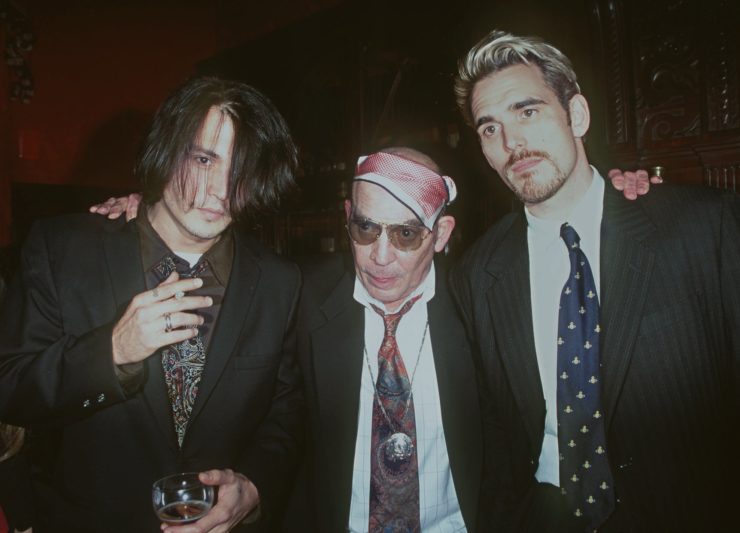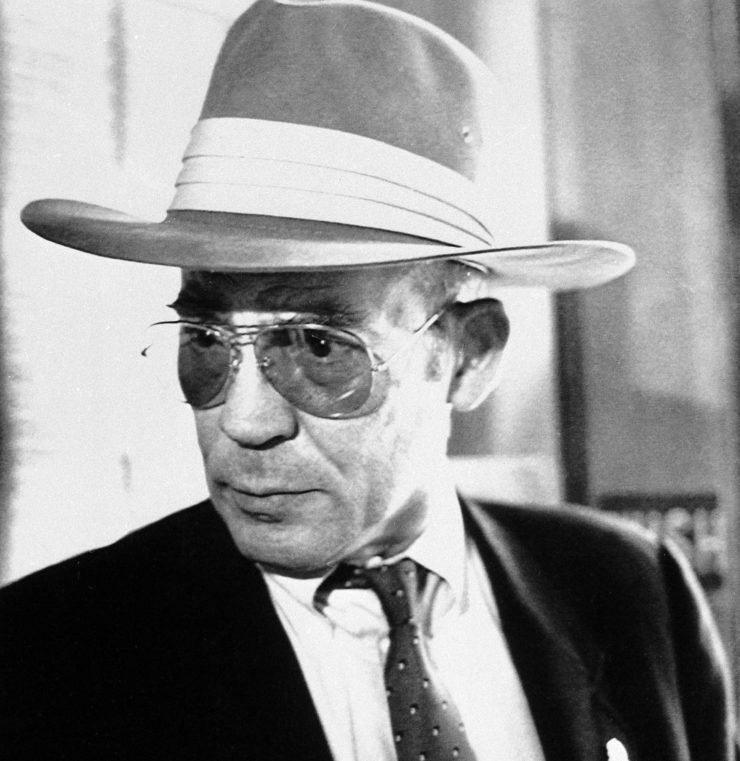It’s hard, I know, to make a case for gonzo journalism in an age when reality is beset by exaggeration, even lies. And yet I’ve found myself drawn back to the work of Hunter S. Thompson, who had an uncanny ability to use hyperbole as journalistic strategy.
Thompson’s adventures in Las Vegas are chaotic not because of him but because of us, because this is the monument we have built to our prurience and half-articulated desires. In such a landscape, Thompson comes across as the most honest person around.
“We were somewhere around Barstow on the edge of the desert when the drugs began to take hold,” he opens “Fear and Loathing in Las Vegas,” which remains, 45 years after it was published in book form, perhaps his signature work. “I remember saying something like ‘I feel a bit lightheaded; maybe you should drive. …’ And then suddenly there was a terrible roar all around us and the sky was full of what looked like huge bats, all swooping and screeching and diving around the car, which was going about a hundred miles an hour with the top down to Las Vegas.”
The bats, of course, are a hallucination — but they are also terrifyingly, fundamentally real, and their presence feels like a necessity, rendering the account more pointed (and, in a way, more accurate) than a traditional report. How, Thompson is asking, do we evoke the feeling of a situation? How do we recreate not only the raw facts of a moment or an incident, but also its sensibility?
“Fear and Loathing” is on my mind because I am living this winter and spring in Las Vegas, which he skewered, memorably, in the piece. Assigned to cover an off-road motorcycle race by Sports Illustrated, Thompson instead produced something weirder, what he called “a savage journey to the heart of the American Dream.” As with so many of his pronouncements, this one is rife with overstatement. It also happens to be true.
“Just one hour ago,” his alter ego Raoul Duke reminds his Samoan attorney (a character based on lawyer and activist Oscar Zeta Acosta), “we were sitting over there in that stinking baiginio, stone broke and paralyzed for the weekend, when a call comes through from some total stranger in New York, telling me to go to Las Vegas and expenses be damned — and then he sends me over to some office in Beverly Hills where another total stranger gives me $300 raw cash for no reason at all. … I tell you, my man, this is the American Dream in action! We’d be fools not to ride this strange torpedo all the way out to the end.”
If “Fear and Loathing in Las Vegas” is recalled at all these days, it’s mostly for its excess, which is prodigious, to say the least. “We had two bags of grass,” Thompson admits at the outset, “seventy-five pellets of mescaline, five sheets of high-powered blotter acid, a salt shaker half full of cocaine, and a whole galaxy of multi-colored uppers, downers, screamers, laughers … and also a quart of tequila, a quart of rum, a case of Budweiser, a pint of raw ether and two dozen amyls.” When I encountered the book in the late 1970s, as a teenager infatuated with the counterculture, I couldn’t see past those details. Later, I couldn’t see past them in a different way, dismissing Thompson’s work as self-indulgent, a portrait of the artist as disordered soul.

And yet, to reread “Fear and Loathing in Las Vegas” at a distance of 40 years is to see anew the metaphor Thompson is creating, the echo between his inner disorientation and that of the nation through which he moves. Partly, this has to do with the promise of the 1960s, which lingers beneath the surface like a psychic archetype.
“There was a fantastic universal sense that whatever we were doing was right, that we were winning,” the author writes of San Francisco in that decade. “… Our energy would simply prevail.” Still, from the perspective of the Nixon years, he understands this was an illusion — or even worse, a lie. “So now,” he concludes, in one of the book’s most devastating passages, “less than five years later, you can go up on a steep hill in Las Vegas and look West, and with the right kind of eyes you can almost see the high-water mark — that place where the wave finally broke and rolled back.”
For Thompson, Las Vegas is an ideal place to see that water mark because it is the end of the road, the terminus point, the place the American Dream has come to die. Glitz and graft and cheap thrills, institutionalized corruption in the service of greed and easy decadence. “A little bit of this town goes a very long way,” he insists. “After five days in Vegas you feel like you’ve been here for five years. Some people say they like it — but then some people like Nixon, too. He would have made a perfect Mayor for this town; with John Mitchell as Sheriff and Agnew as Master of Sewers.” What’s left unstated, although vividly clear, is that he is writing as a true believer, an American patriot, whose rage is fueled not by anarchy but disappointment.
Thompson’s adventures in Las Vegas, then, are chaotic not because of him but because of us, because this is the monument we have built to our prurience and half-articulated desires. In such a landscape, Thompson comes across as the most honest person around. He may be out of control, but at least he knows it; in a country going off the rails, there is no other response. If that were true in 1971, just think how true it must be now. “What is sane?’ Thompson wonders. “Especially here in ‘our own country’ — in this doomstruck era of Nixon. We are all wired into a survival trip now.” Later, he describes an unnamed astronaut, upset at a Canadian musician for singing un-American songs, “muttering darkly about using his influence to ‘get something done, damn quick,’ about the Immigration Statutes.” The more things change, the more they remain the same.
Again, what makes this work is context, the sense that hyperbole is the only reasonable reaction to a hyperbolic age. Thompson grounds even his most scabrous fantasies in recognizable reality. Late in the book, as his paranoia mounts and he is sure he’s about to be arrested, he turns “into the early morning traffic on Paradise Road.” Then, he takes “a fast right on Russell, then a left onto Maryland Parkway … and suddenly I was cruising in warm anonymity past the campus of the University of Las Vegas.” This is my neighborhood, and to see it emerge in the midst of the madness is like stumbling upon a master clue. It’s not the tumult, in other words, that is most trenchant about “Fear and Loathing in Las Vegas;” it’s that no account could possibly be tumultuous enough. Partly, this has to do with the city, but more with the culture that has built it as a shrine. In the face of such excess, what else can he offer but more excess. This is the new American Dream. “I felt like a monster reincarnation of Horatio Alger,” Thompson tells us, “… a man on the Move, and just sick enough to be totally confident.”



